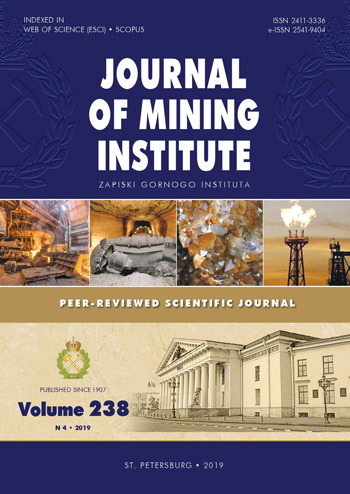Estimation Method for Vector Field Divergence of Earth Crust Deformations in the Process of Mineral Deposits Development
- 1 — Siberian State University of Geosystems and Technologies
- 2 — Saint-Petersburg Mining University
- 3 — Institute of Mining of the Ural Branch of the Russian Academy of Sciences
Abstract
An essential requirement for effective and safe deposit development is good geomechanical software. Nowadays software packages based on finite element method are used extensively to estimate stress-strain state of the rock mass. Their quality use can only be assured if boundary conditions and integral mechanical properties of the rock mass are known. In mining engineering this objective has always been achieved by means of experimental observations. The main source of information on initial and man-induced stress-strain state of the rock mass is natural measurement of displacement characteristics. Measurement of geodetic data (coordinates, heights, directions) in the period between alteration cycles allows to plot a field of displacement vectors for the points in question. Taken together, displacement vectors provide information on the objective stress-strain state of the Earth crust. Basing on it, strain tensors, displacement components, directions and rates of compression and tension can be calculated in the examined area. However, differential characteristics of any physical vector field – namely, curl and divergence – need to be taken into account. Divergence is a single value (scalar) associated with a single point. Vector field as a whole can be described with divergence scalar field. Divergence indicates the sign (positive or negative) of volume changes in the infinitesimal region of space and characterizes vector flux in the nearest proximity and in all directions from a given point. In the paper authors propose a method to estimate divergence using discrete geodetic observations of displacement occurring on the surface of examined territory. It requires construction of formulas that model vector field for any point of the area. It is proposed to use power polynomials that describe displacement in three directions (x, y, z). These formulas allow to estimate field vectors in any given point, i.e. to form vector tubes. Then areas of input and output cross-section, as well as divergence values are calculated. This increases the quality of geodetic observation and provides opportunities for more precise modeling of the rock mass disrupted by mining operations, using modern software packages.
